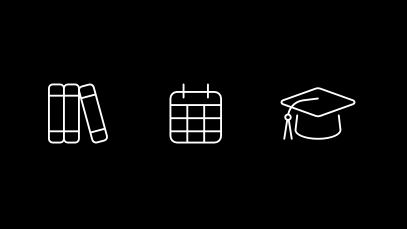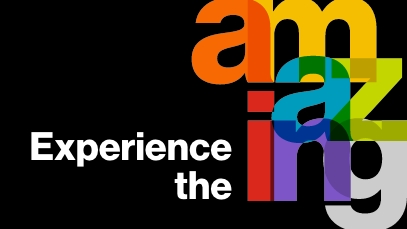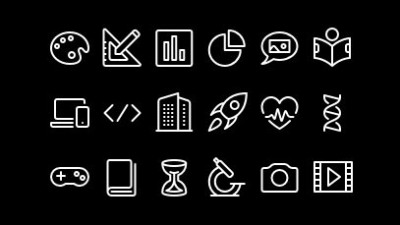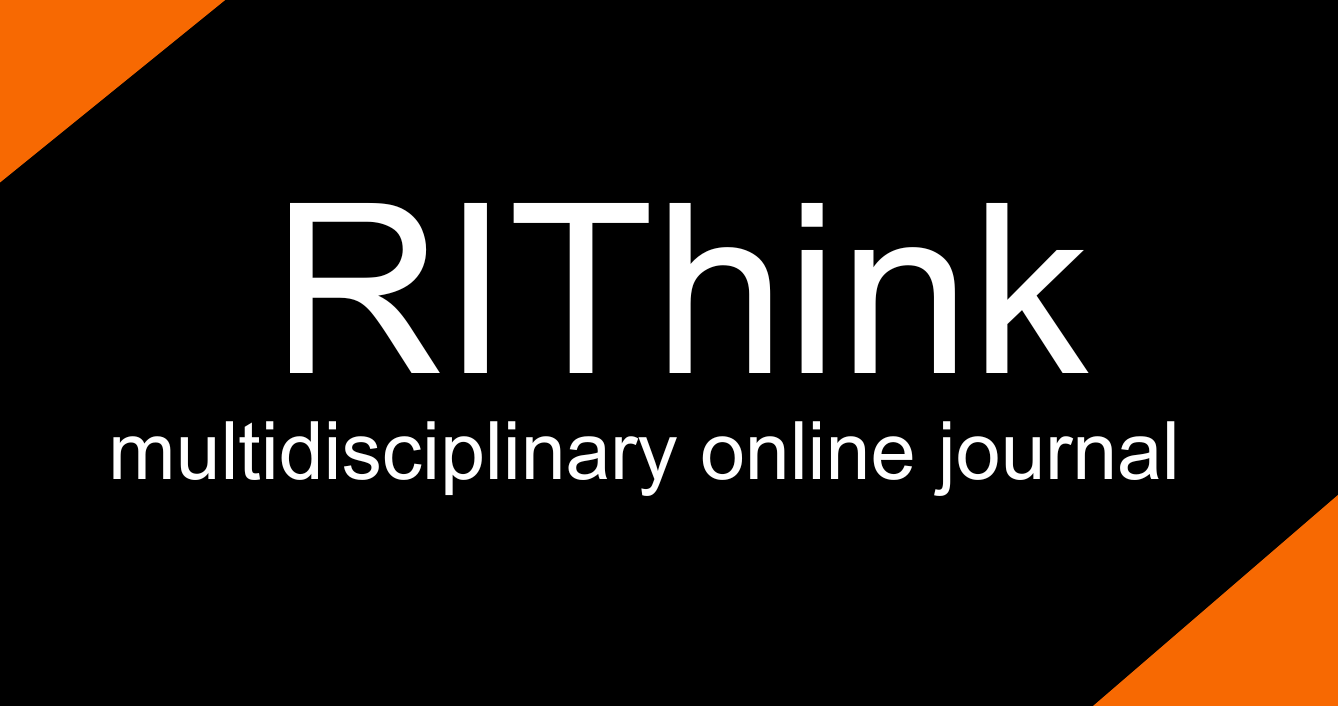New Media Design BFA
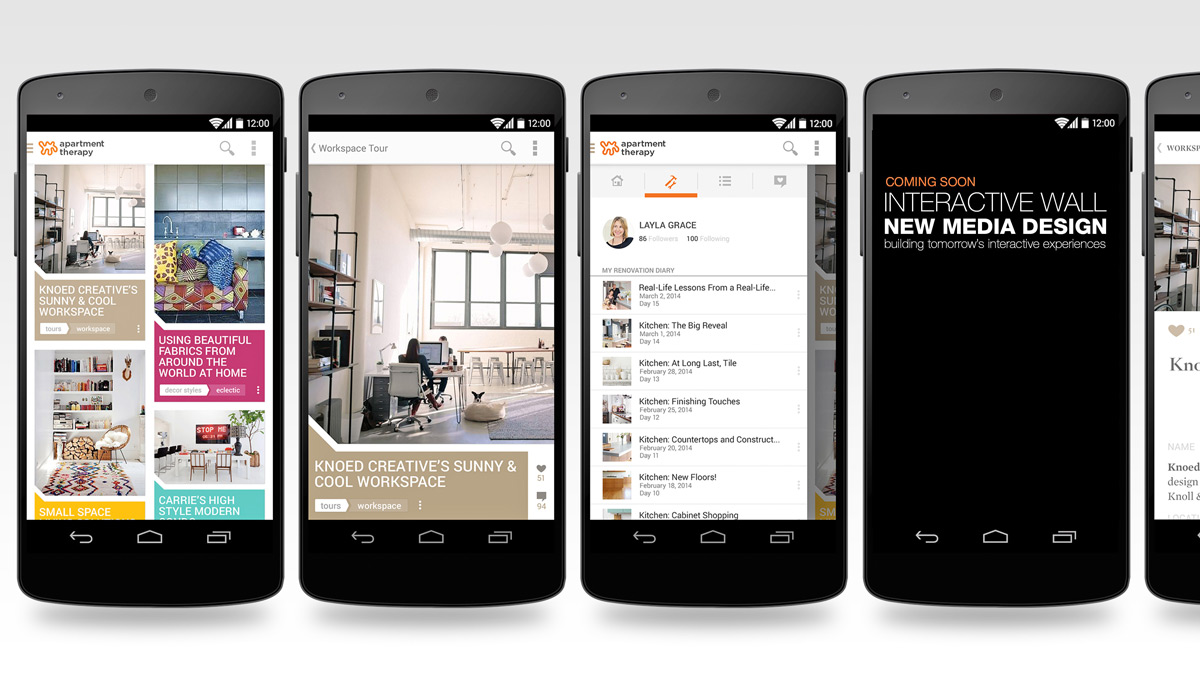
New Media Design BFA
- RIT/
- RIT Croatia/
- Programs/
- New Media Design BFA
At the intersection of art, visual communication, design strategy and user experience design, the four-year undergraduate New Media Design program, delivered in Zagreb, produces innovative thinkers, designers and creators of next generation of digital media.
400
working hours of co-op minimum
2
degrees
Awarded to students graduating from undergraduate programs (US degree from RIT and European degree from RIT Croatia)
Overview
The New Media Design program is a multidisciplinary, transformative program that integrates art, design communication, computing, and technology to create highly interactive user experiences on all types of digital devices. New Media Design is a major at RIT within the New Economy Program. This forward-thinking and future-forming degree program helps prepare students to excel in the multidisciplinary nature of our modern, dynamic economy.
The program has four key components: new media and design courses, general education courses, basic courses in art and computer science, and cooperative education (experiential learning).
New media and design courses cover the following areas: design basics, interaction design, 3D, and motion graphics. Approximately one-third of classes are held in the form of lectures, where current theories and concepts are studied, and two-thirds of classes are held in the form of laboratory exercises, where students focus on practical knowledge and projects.
General education is based on humanities courses, which complement core program courses. Basic courses in art and computer science cover the basics of drawing and an introduction to programming, thus creating the broad foundation needed for the core program courses.
View the detailed Program Outline
Choose a minor and expand your knowledge about area of your interest
The American higher education system enables students to choose a minor. It is a related set of academic courses that enables students to expand their knowledge in a specific area; for example, you can choose a Psychology minor and combine it with your New Media Design courses.
The benefits of having a minor are multiple; from being visible on a university transcript to enabling a student to develop another area of professional expertise or personal interest and showcase depth in more than one discipline.
Find out more about minors available for the New Media Design program.
Careers and Cooperative Education
Typical Job Titles
| App Designer | Digital Product Designer |
| Creative Director | Graphic Designer |
| Design Director | Interactive Designer |
| Motion Graphic Designer | Presentation Designer |
| UI/UX Designer | Visual Designer |
Minimum 400 hours of work experience
What’s different about an RIT Croatia education? It’s the valuable career experience you gain through cooperative education—connecting with leading companies across various industries. You’ll earn more than a degree. You’ll gain real-world career experience that sets you apart.
The program is focused on hands-on experience from Day 1; therefore students are required to complete a minimum of 400 hours of cooperative education (co-op) or internship placements. This provides students with valuable professional experience and gives them a competitive advantage in launching their careers. At RIT Croatia, students take the lead in securing their co-ops, while we provide strong industry connections through classroom engagement and events. Our students gain experience with both local and internationally renowned companies, learning about new media design from top professionals.
Co-op is usually completed in the summer months. Co-op is planned, monitored, and evaluated by the student, the co-op counselor, and the employing firm.
Curriculum
New Media Design
| Course | Sem. Cr. Hrs. | |
|---|---|---|
| First Year | ||
| FDTN-111 |
Drawing I
This course is an introduction to the visualization of form, thought and expression through the drawing process. Concepts are introduced by lectures, discussions, demonstrations, research, and assigned projects. Designed to provide a broad introductory experience, students will experiment with a wide variety of media, tools, techniques and subjects to develop drawing expertise and problem solving skills related to design and composition. Course work will be assessed through critique, facilitating self-assessment, and the growth of both a visual and verbal vocabulary. The focus of the course is to provide awareness of the full range of ways in which drawing is used as a tool for both self-expression and communication.
|
3 |
| FDTN-121 |
2D Design I
This course is a structured, cumulative introduction to the basic elements and principles of two-dimensional design. Organized to create a broad introductory experience, the course focuses on the development of both a visual and a verbal vocabulary as a means of exploring, developing and understanding two-dimensional compositions. Concepts are introduced through lectures, discussions, demonstrations, research, assigned projects and critiques. The course addresses a wide variety of media, tools, techniques both traditional and technological, and theoretical concepts to facilitate skill development and experimentation with process. Visual comprehension, the ability to organize perceptions and horizontal thinking that crosses other disciplines and theories, are key foundational components to the development of problem solving skills. Accumulative aspects of the curriculum included the exploration of historical and cultural themes and concepts intertwined with aspects of personal interpretation and experience.
|
3 |
| NMDE-111 |
New Media Design Digital Survey I
This project-based course is an investigation of the computer as an illustrative, imaging, and graphical generation tool. It develops foundational design skills in raster and vector image creation, editing, compositing, layout and visual design for online production. Emphasis will be on the application of visual design organization methods and principles for electronic media. Students will create and edit images, graphics, layouts and typography to form effective design solutions for online delivery.
|
3 |
| UWRT-100 |
General Education Elective: Critical Reading and Writing
This course is designed to help students develop the literacy practices they will need to be successful in their First-Year Writing course. Students will read, understand, interpret, and synthesize a variety of texts. Assignments are designed to challenge students intellectually, culturally and rhetorically. Through inquiry-based assignment sequences, students will improve their writing by developing academic research and literacy practices that will be further strengthened in First-Year Writing. Particular attention will be given to critical reading, academic writing conventions, and revision. Small class size promotes frequent student-instructor and student-student interaction. The course also emphasizes the principles of intellectual property and academic integrity in academic writing.
|
3 |
| FDTN-141 |
4D Design
4D Design introduces students to the basic concepts of art and design in time and space. The course explores elements of moving images such as continuity, still and moving image editing, transitions and syntax, sound and image relations, and principles of movement. Computers, video, photo, sound and lighting equipment are used to create short-form time-based work relevant to students in all majors and programs required to take this course. The course addresses the both historical conventions of time in art and recent technological advances, which are redefining the fields of Fine Art and Design. In focusing on the relations between students' spacing and timing skills, 4D Design extends and supplements the other Foundation courses, and prepares students for further work with time-based media.
|
3 |
| PHIL-103 |
Ethical or Social perspective; GE elective Critical Thinking
The purpose of this course is to improve everyday reasoning skills. Critical thinking means evaluating the reasons for our actions and beliefs. Ideally, we think our actions are rational, not arbitrary. But one does not have to look far to discover disagreement and apparent irrationality. What accounts for this? This course investigates how to argue effectively, how to evaluate evidence and reasons, and how to marshal good evidence and reasons in order to arrive at reliable knowledge and justified action. It covers common mistakes that people make in causal, statistical, moral, and everyday reasoning, and it teaches how and when it pays to be skeptical, reflective, and critical.
|
3 |
| FDTN-112 |
Drawing II
This course is an introduction to the visualization of form, thought and expression through the drawing process. Concepts are introduced by lectures, discussions, demonstrations, research, and assigned projects. Designed to provide a broad introductory experience, students will experiment with a wide variety of media, tools, techniques and subjects to develop drawing expertise and problem solving skills related to design and composition. Course work will be assessed through critique, facilitating self-assessment, and the growth of both a visual and verbal vocabulary. The focus of the course is to provide awareness of the full range of ways in which drawing is used as a tool for both self-expression and communication.
|
3 |
| YOPS-10 |
RIT 365: RIT Connection
RIT 365 students participate in experiential learning opportunities designed to launch them into their career at RIT, support them in making multiple and varied connections across the university, and immerse them in processes of competency development. Students will plan for and reflect on their first-year experiences, receive feedback, and develop a personal plan for future action in order to develop foundational self-awareness and recognize broad-based professional competencies. Lecture 1 (Fall, Spring).
|
0 |
| NMDE-112 |
New Media Design Digital Survey II
Through formal studies and perceptual understanding, including aesthetics, graphic form, structure, concept development, visual organization methods and interaction principles, students will design graphical solutions to communication problems for static and interactive projects. Students will focus on creating appropriate and usable design systems through the successful application of design theory and best practices. Assignments exploring aspects of graphic imagery, typography, usability and production for multiple digital devices and formats will be included.
|
3 |
| NMDE-103 |
New Media Design Interactive I
This course provides an introduction to key internet, web and multimedia technologies. Topics covered include computer-based communication and information, basic HTML, Adobe Flash and WYSIWYG editors, basic internet applications such as FTP, basic use of digital images, audio and video techniques, web page design, web animation for development and publishing.
|
3 |
| PHAR-160 |
Intro to Digital Photography
An introduction to digital photography – technical, aesthetic, conceptual – for non-photography majors. Through weekly assignments, students will become familiar with the operation of a DSLR camera body/lens, while exploring the basic principles of lighting, depth of field, design, blur/stop motion, accurate exposure, and image manipulation. Lectures will address photographic aesthetics, contemporary and historical practices, and professional applications. Students will learn to critique work through participation in discussions of photographic assignments. Non-photo majors only. **A materials fee is required for this course and an additional facilities fee for non-SPAS students**
|
3 |
| Second Year | ||
| NMDE-201 |
New Media Design Elements II
Information design for static, dynamic and interactive multimedia integrates content with visual indicators. Legibility and clear communication of information and direction is important to the success of any user interface design. This course integrates imagery, type, icons, actions, color, visual hierarchy, and information architecture as a foundation to design successful interactive experiences.Prerequisites: NMDE-102 or 112 or equivalent course and student standing in NMDE-BFA or HCC-BS or DIGHSS-BS program.
|
3 |
| NMDE-202 |
New Media Design 3D
A comprehensive course in visualization that extends previous experience and skills to include three-dimensional creation and design. The course will provide studies in 3D modeling, rendering and animation for use in virtual spaces, rich internet and mobile applications as well as motion graphic design. Digital 3D tools will be used for solving visual design and communication problems. Students will be expected to show evidence of growth in 3D asset creation and usage in the form of simple product renderings, interactive integration and story based animation.
|
3 |
| IGME-101 |
New Media Interactive Design and Algorithmic Problem Solving I
This course provides students with an introduction to problem solving, abstraction, and algorithmic thinking that is relevant across the field of new media. Students are introduced to object-oriented design methodologies through the creation of event-driven, media-intensive applications. Students will explore the development of software through the use of a range of algorithmic concepts related to the creation of applications by writing classes that employ the fundamental structures of computing, such as conditionals, loops, variables, data types, functions, and parameters. There is an early emphasis on object oriented concepts and design. (This course is restricted to students in NWMEDID-BS or NMDE-BFA with at least 2nd year standing or GAMED-MN students.) Lec/Lab 6.
|
4 |
| UWRT-150 |
General Education Elective; Writing Intensive: FYW: Writing Seminar
Writing Seminar is a three-credit course limited to 19 students per section. The course is designed to develop first-year students’ proficiency in analytical and rhetorical reading and writing, and critical thinking. Students will read, understand, and interpret a variety of non-fiction texts representing different cultural perspectives and/or academic disciplines. These texts are designed to challenge students intellectually and to stimulate their writing for a variety of contexts and purposes. Through inquiry-based assignment sequences, students will develop academic research and literacy practices that will be further strengthened throughout their academic careers. Particular attention will be given to the writing process, including an emphasis on teacher-student conferencing, critical self-assessment, class discussion, peer review, formal and informal writing, research, and revision. Small class size promotes frequent student-instructor and student-student interaction. The course also emphasizes the principles of intellectual property and academic integrity for both current academic and future professional writing.
|
3 |
| NMDE-204 |
New Media Design Animation
This project-based course provides training and practical experience in producing two- and three-dimensional animated sequences using off the shelf multimedia software. Students produce a number of short exercises incorporating original computer and non-digital artwork. Topics include key frame and tweening, cycling, acceleration, squash and stretch, backgrounds, inking, rotoscoping, sound, masking, multi-plane effects and space-to-time. Screenings of professionally made films will illustrate and provide historical perspective. Prerequisites: FDTN-141 and NMDE-202 or equivalent course.
|
3 |
| NMDE-203 |
New Media Design Interactive II
This course extends previous interactive design and development experience and skills to emphasize interactive design principles and development. The emphasis in this course will be on the creative process of planning and implementing an interactive project across multiple platforms. Students will concentrate on information architecture, interactive design, conceptual creation, digital assets, visual design and programming for interactions. Prerequisites: NMDE-103 or ISTE-140 and NMDE-112 and NMDE-201 or equivalent courses.
|
3 |
| IGME-102 |
New Media Interactive Design and Algorithmic Problem Solving II
This course provides students a continued introduction to problem solving, abstraction, and algorithmic thinking that is relevant across the field of new media. As the second course in programming for new media students, this course continues an object-oriented approach to programming for creative practice. Topics will include re-usability, data structures, rich media types, event-driven programming, loaders, XML, object design, and inheritance. Emphasis is placed on the development of problem-solving skills as students develop moderately complex applications. (Prerequisites: C- or better in IGME-101 or equivalent course and students in NWMEDID-BS or NMDE-BFA with at least 2nd year standing or GAMED-MN students.) Lec/Lab 6.
|
4 |
| ARTH-135 |
General Education Elective;Artistic or Global Perspective Survey: Ancient to Medieval Art
In this course students will examine the forms, styles, functions, and meanings of important objects and monuments dating from prehistory through the Middle Ages, and consider these works of art in their social, historical and cultural contexts. The primary goals of this course are to learn how to look, how to describe and analyze what we see, and how to use these skills to understand and explain how art visually expresses meaning. At the end of the term, students will have gained a foundational knowledge of the object, scope and methods of the discipline of art history. The knowledge obtained in this introductory course will also guide students in their own creative endeavors.
|
3 |
| French Immersion | 8 | |
| MLFR-201 |
Beginning French I
This is the first course in a two-course sequence. The sequence provides students without prior exposure to the language with a sound basis for learning French as it is used today in its spoken and written forms. The goal of the sequence is proficiency in communication skills with an emphasis on oral proficiency. The sequence also acquaints students with contemporary culture and life in French-speaking countries. Students must take placement exam if this is their first RIT class in French and they have some prior study of French.
|
|
| MLFR-202 |
Beginning French II
This is the second course in a two-course sequence. The sequence provides students without prior exposure to the language with a sound basis for learning French as it is used today in its spoken and written forms. The goal of the sequence is proficiency in communication skills with an emphasis on oral proficiency. The sequence also acquaints students with contemporary culture and life in French-speaking countries. Prerequisite: MLFR 201.
|
|
| German Immersion | 8 | |
| MLGR-201 |
Beginning German I
This is the first course in a two-course sequence. The sequence provides students without prior exposure to the language with a sound basis for learning German as it is used today in its spoken and written forms. The goal of the sequence is proficiency in communication skills with an emphasis on oral proficiency. The sequence also acquaints students with contemporary culture and life in the German-speaking countries. Students must take a placement exam if this is their first RIT class in German and they have some prior study of German.
|
|
| MLGR-202 |
Beginning German II
This is the second course in a two-course sequence. The sequence provides students without prior exposure to the language with a sound basis for learning German as it is used today in its spoken and written forms. The goal of the sequence is proficiency in communication skills with an emphasis on oral proficiency. The sequence also acquaints students with contemporary culture and life in the German-speaking countries.
|
|
| Italian Immersion | 8 | |
| MLIT 201 |
Beginning Italian I
This is the first course in a two-course sequence. The sequence provides students without prior exposure to the language with a sound basis for learning Italian as it is used today in its spoken and written forms. The goal of the sequence is proficiency in communication skills with an emphasis on oral proficiency. The sequence also acquaints students with contemporary culture and life in the Italian-speaking countries. Students must take placement exam if this is their first RIT class in Italian and they have some prior study of Italian.
|
|
| MLIT 202 |
Beginning Italian II
This is the second course in a two-course sequence. The sequence provides students without prior exposure to the language with a sound basis for learning Italian as it is used today in its spoken and written forms. The goal of the sequence is proficiency in communication skills with an emphasis on oral proficiency. The sequence also acquaints students with contemporary culture and life in the Italian-speaking countries. Prerequisite: MLIT 201.
|
|
| Spanish Immersion | 8 | |
| MLSP-201 |
A: Beginning Spanish I
Beginning Spanish IA is for true beginners of Spanish: those who have never studied the language or have very little recollection of it (the latter as acknowledged by placement test results). This course introduces the Spanish language and the culture of Hispanic countries to beginners, and provides a basic foundation in all skills in Spanish (speaking, listening, reading, writing, culture) through intensive practice in a variety of media. Language work progresses from autobiographical information, through the present tense, to preliminary work in the past tenses. Students must take the placement exam if this is their first RIT class in Spanish and they have some prior study of Spanish.
|
|
| MLSP-202 |
Beginning Spanish II
This course continues the basic grammatical structures, vocabulary and situations of first-year Spanish, with foundation work in all skills (speaking, listening, reading, writing, culture). Beginning Spanish II continues work in the past tenses and includes work on the subjunctive mood, plus the future and conditional tenses. Students work on paragraph-length speech and writing, and move toward readiness for conversation and composition. Prerequisites: MLSP-201A.
|
|
| Third Year | ||
| NMDE-302 |
New Media Design Graphical User Interface
This course examines the user-centered and iterative design approaches to application and interactive development with a focus on interface design, testing and development across multiple devices. Students will research and investigate human factors, visual metaphors and prototype development to create effective and cutting edge user interfaces. Prerequisites: NMDE-201 and NMDE-203 or equivalent courses.
|
3 |
| NMDE-305 |
New Media Design Motion Graphics
This course will deal with design concepts related to moving type. The impact of type as it moves, rotates, explodes, scales and fades will be considered. Legibility of the message will be studied in relation to delivery methods. Additional compositing, three-dimensional, camera tracking and special techniques and effects will be introduced during the class. Prerequisites: NMDE-204 or equivalent course.
|
3 |
| ARTH-136 |
General Education Elective; Artistic or Global Perspective: Survey: Renaissance to Modern Art
In this course students will examine the forms, styles, functions, and meanings of important objects and monuments dating from the Renaissance through the beginning of the twentieth century, and consider these works of art in their social, historical and cultural contexts. The primary goals of this course are to learn how to look and how to describe and analyze what we see, and to use these skills to understand and explain how art visually expresses meaning. At the end of the term, students will have gained a foundational knowledge of the object, scope and methods of the discipline of art history. The knowledge obtained in this introductory course will also guide students in their own creative endeavors.
|
3 |
| PSYC-101 |
General Education-Social Perspective: Introduction to Psychology
Introduction to the field of psychology. Provides a survey of basic concepts, theories, and research methods. Topics include: thinking critically with psychological science; neuroscience and behavior; sensation and perception; learning; memory; thinking, language, and intelligence; motivation and emotion; personality; psychological disorders and therapy; and social psychology.
|
3 |
| NMDE-301 |
Writing Intensive- New Media Design Elements III
This course focuses on advanced visual communication within the current new media design profession. Through formal studies and perceptual understanding, including aesthetics, graphic form and structure, concept development and visual organization methods, students will design sophisticated solutions to communication problems. This course integrates imagery, typography, icons, user interface design, content creation and information architecture in order to design successful static, motion and interactive experiences. Prerequisites: NMDE-201 and NMDE-302 or equivalent courses and completion of First Year Writing (FYW) requirement.
|
3 |
| NMDE-303 |
New Media Design Interactive III
A study of the application of information design theory and practice to the developing area of new media. Cartography and iconography will be viewed in the context of web and kiosk use. The delivery of consumer information, using interactive and dynamic media as the vehicle, will be investigated. Prerequisites: NMDE-302 or equivalent course and student standing in NMDE-BFA program.
|
3 |
| GRDE-201 |
Typography I
This course is an introduction to the fundamental principles of typography (the visual representation of language) to effectively convey information and ideas to specific audiences. Focus is on the communicative function and aesthetic nature of typographic problem-solving. Course content and lectures will cover typographic terminology, type anatomy, history of typography as well as type classification, type measurement, and issues of legibility and readability. Once students are introduced to the fundamentals of typography, they will include imagery as appropriate. Students will also refine their skills using relevant software. Pre-requisites: GRDE-106 and (GRDE-107 or FDTN-141) or equivalent courses.
|
3 |
| ARTH-368 |
Art History Elective; General Education Elective: 20th Century Art: 1900-1950
A critical study of the art and visual culture of the first five decades of the twentieth century. Major stylistic movements in Europe and America will be examined with special attention to innovations in materials, subject matter, and philosophy. Central themes include: the relationship between art and politics, abstraction vs. figuration, primitivism, anti-modernism, and the search for origins, reactions to modernity and the rise of technology, the tension between the avant-garde and popular culture, utopian and dystopian views of art and society, the institutional critique, artistic responses to Phenomenology, Existentialism, Nihilism, and the special role of art and artists in modern society. (Prerequisites: ARTH-136 or equivalent course.) Lecture 3.
|
3 |
| Language Immersion | 3 | |
| MLSP-301 |
Intermediate Spanish I
This is the first course in the Intermediate Spanish sequence (second year). Intermediate Spanish I is a course in Conversation, along with grammar review and culture study. Emphasis is on tourist survival situation dialogues, various forms of conversation, and registers of formality. The basic skills learned in the first year courses are now put into practice. Students must take the placement exam if this is their first RIT Spanish class, and they have some prior study of Spanish. Prerequisite: MLSP-202.
|
|
| MLIT-301 |
Intermediate Italian I
This is the first course of a two-course sequence at the intermediate level. The sequence provides students with the tools to increase their ability to function in Italian. Communicative activities, contemporary texts, and the study of vocabulary and grammar are used to expand all communication skills, especially oral proficiency. This sequence continues to address issues of contemporary Italian life and culture. Prerequisite: MLIT-202.
|
|
| MLFR-301 |
Intermediate French I
This is the first course of a course of a two-course sequence at the intermediate level. The sequence provides students with the tools necessary to increase their ability to function in French. Communicative activities, contemporary texts, vocabulary study, and grammar are used to expand all communication skills, especially oral proficiency. This sequence continues to address issues of contemporary French life and culture as well as the cultures of the Francophone world. Prerequisite: MLFR-202.
|
|
| MLGR-301 |
Intermediate German I
This is the first course of a two-course sequence at the intermediate level. The sequence provides students with the tools to increase their ability to function in German. Communicative activities, contemporary texts, and the study of vocabulary and grammar are used to expand all communication skills, especially oral proficiency. This sequence continues to address issues of contemporary German life and culture. Prerequisite: MLGR-202
|
|
| Fourth Year | ||
| NMDE-401 |
New Media Design Capstone I
This course will focus on individual career preparation through topics such as resume development, job research, interviewing best practices, and creating or refining an online portfolio. Additional exploration and overviews will include the business aspects, practices, and workflows of the new media industry with a focus on designer/developer/client relationships. Students will integrate project workflows, management, team building, concept generation and prototyping through small team projects, and project research for NMD Capstone II. Enrollment Requirement: NMDE-BFA 4YR or NWMEDID-BS 3+.
|
3 |
| NMDE-404 |
New Media Design Interactive IV
Students will create innovative interactive product promotions and installations. The projects created in the class will embrace new technology and will focus on innovative solutions for real world design problems. An emphasis will be placed on researching new technology and using it in conjunction with solid interactive design skills to create innovative projects. Prerequisites: NMDE-303 or equivalent course.
|
3 |
| ENGL-210 |
General Education Elective; Artistic Perspective & Writing Intensive: Literature and Cultural Studies
In this course, students will study literature, movements, and writers within their cultural contexts and in relation to modes of literary production and circulation. Students will hone their skills as attentive readers and will engage with literary analysis and cultural criticism. The class will incorporate various literary, cultural, and interdisciplinary theories--such as psychoanalytic theory, feminist and queer theories, critical race studies, and postcolonial theory. Using these theoretical frameworks in order to study texts, students will gain a strong foundation for analyzing the ways literary language functions and exploring the interrelations among literature, culture, and history. In doing so, they will engage issues involving culture, identity, language, ethics, race, gender, class, and globalism, among many others.
|
3 |
| NMDE-411 |
New Media Design Capstone II
This course will engage the New Media Design and related majors in a capstone production experience. The instructor will form collaborative student teams that will design, plan, prototype, and implement new media projects. Student teams will test their product with users and provide written feedback and analysis. Students will be evaluated on individual contributions and their team’s final capstone project.
|
3 |
| NMDE-406 |
New Media Design Experimental
This project-based course affords the student the ability to apply an experimental approach to integrating digitally generated content with new media techniques and processes in new, imaginative ways. Students will be encouraged to approach the computer as a medium of creativity to explore issues of narrative, identity, place, and visual reality vs. digital reality. Students will exhibit completed projects in a virtual or public forum. This course is topic based and can be taken multiple times for credit. Specific topics can only be taken once. The topics will include advanced concepts in 3D, UX, digital art and interaction design. Co-requisite: NMDE-404 or equivalent course.
|
3 |
| ISTE-240 |
Web & Mobile II
This course builds on the basics of web page development that are presented in Web and Mobile I and extends that knowledge to focus on theories, issues, and technologies related to the design and development of web sites. An overview of web design concepts, including usability, accessibility, information architecture, and graphic design in the context of the web will be covered. Introduction to web site technologies, including HTTP, web client and server programming, and dynamic page generation from a database also will be explored. Development exercises are required. Prerequisites: (ISTE-120 or CSCI-140 or CSCI-141 or NACA-161 or IGME-105 or IGME-101 or NMAD-180 or GCIS-123) and (ISTE-140 or NACA-172 or IGME-230 or IGME-235) or equivalent course.
|
3 |
| ARTH-369 |
Art History Elective;General Education Elective : 20th Century Art Since 1950
A critical study of the art and visual culture of the second half of the twentieth century. Major stylistic movements in Europe and America are examined with special attention to innovations in materials, subject matter, and philosophy. Central themes include: Abstract Expressionism, Pop Art, West Coast Junk, Funk and Beat, Nouveau Réalisme, CoBRA and Situationism, Arte Povera, Earthworks, Site Specificity, Allegory, Conceptualism, Minimalism, Feminism, Performance, Happenings, Installation, and New Media. Prerequisites: ARTH-136 or equivalent course.
|
3 |
| ENVS-150 |
General education Elecive;Natural Science Inquiry Perspective; Scientific Principles Perspective;Science / Math Literacy: Ecology of the Dalmatian Coast
This course is an introduction to population, community, and ecosystem ecology; stressing the dynamic interrelationships of plant and animal communities of the Dalmatian Coast. The course includes such ecological concepts as energy flow and trophic levels in natural communities, population and community dynamics, biogeography and ecosystem ecology. Field trips to local Croatian ecosystems are included.
|
4 |
| Free Elective | 3 | |
Admission Process
Learn about RIT Croatia's admission process
Internationally recognized diplomas and high educational standards
Upon completion of the program, students will be granted two diplomas, an international American Bachelor of Fine Arts (BFA) degree awarded by Rochester Institute of Technology and a Croatian degree from RIT Croatia with the degree title prvostupnik/prvostupnica (baccalaureus/baccalaurea) inženjer/inženjerka multimedijske i grafičke tehnologije for the New Media Design program, earning 240 ECTS points. Dual degrees provide additional opportunities for our graduates and increase their chances of employment throughout the European Union and the world.
Programs and curriculum at RIT Croatia are fully aligned with the high standards of education at Rochester Institute of Technology*.
*Rochester Institute of Technology is accredited by the Middle States Commission on Higher Education, 3624 Market Street, Philadelphia, PA 19104(267-284-5000). The Middle States Commission on Higher Education is an institutional accrediting agency recognized by the U.S. Secretary of Education and the Council for Higher Education Accreditation.
Testimonials
-
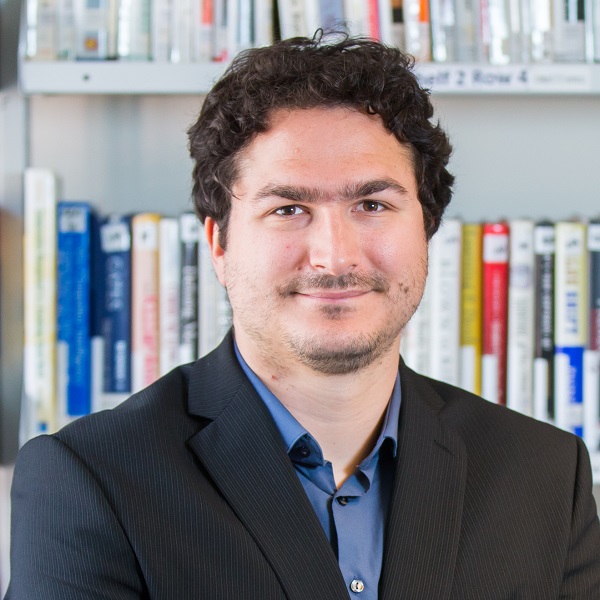
If you are a genuinely curious, hard-working and an eager-to-learn individual looking for an education that will prepare you for the career of your choice (or will help you find out which career to pursue), look no further. RIT Croatia has it all. On top of high-quality American education, you can expect long-lasting friendships, memorable experiences and distinctive professional challenges woven into a dynamic multicultural learning environment. We are waiting for you!
Dr. Domagoj TolićLecturer/Research Associate, Web and Mobile Computing / Information Technology -

Ukrainian student in Croatia - easy! Studying in Croatia has been an incredible journey, and I can confidently say that the Web and Mobile Computing program at this college has truly transformed my programming skills. If you believe college is about mundane lectures, you haven't experienced the vibrant learning environment here. Engaging lectures, interactive discussions, and challenging projects have made learning enjoyable, bridging theory with practice. I am grateful for the enriching experience and the opportunity to thrive in this remarkable academic community.
Ihor BerehovyiAlumnus, Class of 2023 -

An advantage of studying at RIT Croatia is how the curriculum is organized so that students get a lot of hands-on experience with in-class projects and through the co-op program. They are given a great foundation that allows them to develop themselves and careers in any direction of their choice. During my senior year at RIT Croatia, I started a company and became a co-founder of Enum Software; since then we have been working on many interesting smart city projects such as Dubrovnik Card, Smart Parking Dubrovnik, Dubrovnik Eye, and LibertasApp.
Andrej ŠarićAlumnus, Class of 2016 -

Web and Mobile Computing explores fullstack application development, emphasizing the visual aspects of design thinking and development life cycle to realize user expectations. All developers need to understand and comprehend the whole spectrum - back-end and front-end technologies - of the application development process. Our program provides this and more. The students learn how to design, build and cultivate all the different layers of application development which makes them incredibly valuable to employers in a field that has a higher-than-average projected career growth rate.
Dr. Alan MutkaDepartment Chair of Web and Mobile Computing Department / Senior Lecturer -
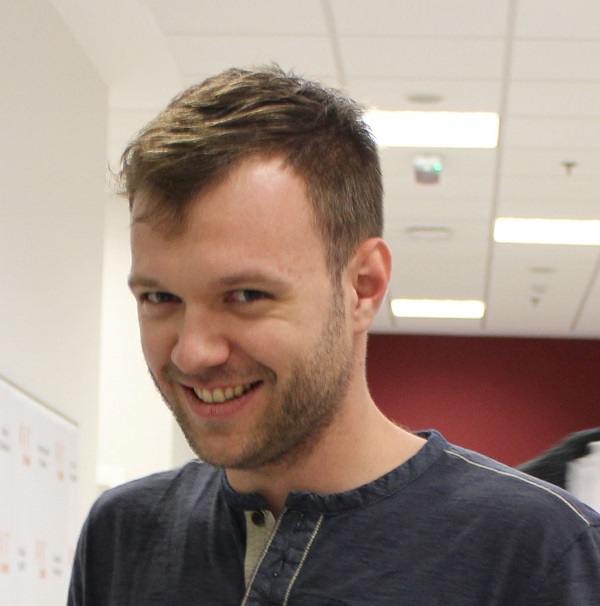
When it comes to thinking about a career and finding a job after graduation, I had no fear, and I think that’s the goal of this kind of study program. The mandatory internship gives students a unique experience working in the most well-known and best performing IT companies and gives them an edge over the competition.
Matko PiškorAlumnus, Class of 2020


